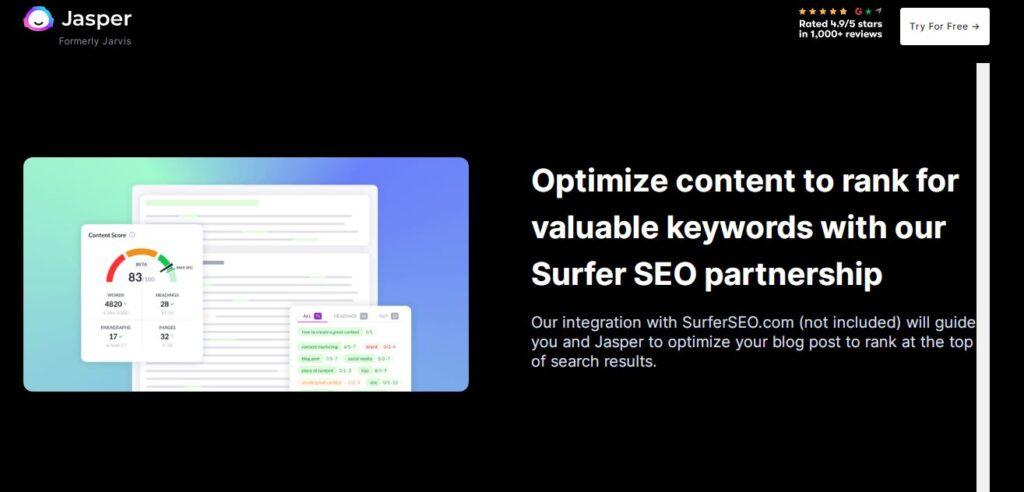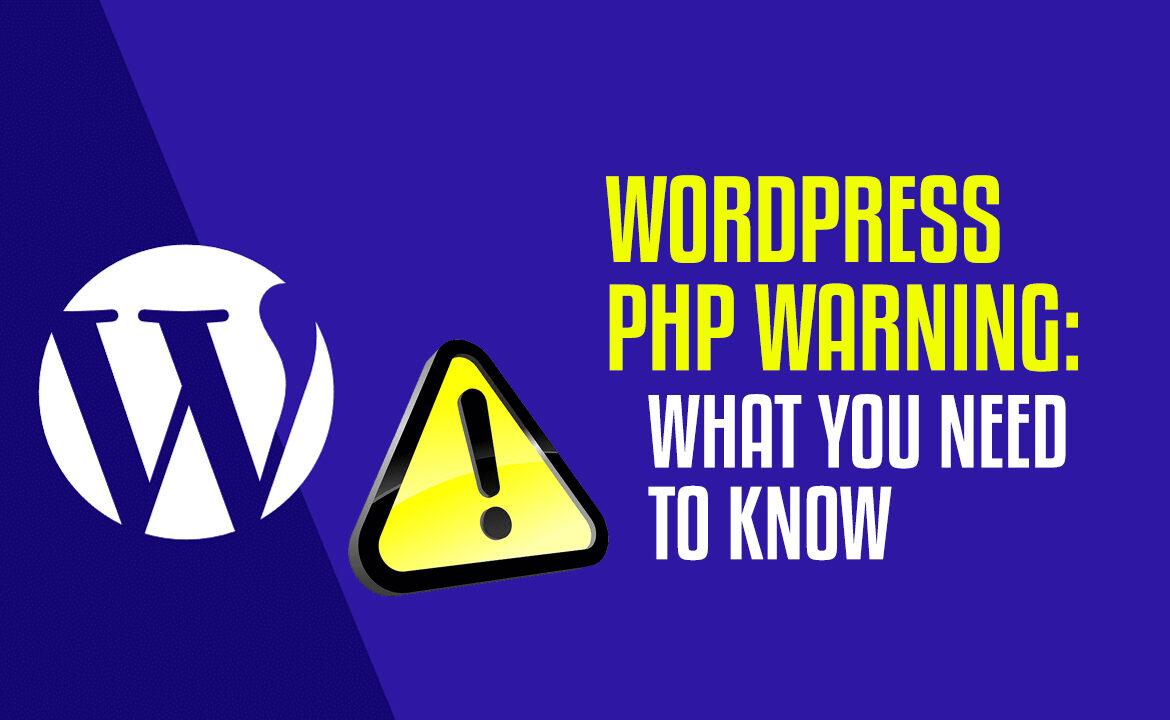WordPress PHP Warning: What You Need to Know
If you’re a WordPress user, then you’ve likely seen a warning like this before: “PHP Warning: require_once(/var/www/html/wp-config.php): failed to open stream: No such file or directory in /var/www/html/index.php on line 9.” This can be a scary message, but don’t worry – we’re here to help! In this blog post, we will explain what the WordPress PHP warning means and how to fix it. Keep reading for more information!

WordPress is a wonderful platform, and it’s one of the most popular. However, to stay on top, WordPress must adhere to ever-changing web architecture. PHP is the programming language at the heart of WordPress, which was originally designed in 1995.
PHP has changed considerably over the years. It’s not a rigid language; rather, it’s maintained by a group that adds new capabilities, removes obsolete features, and keeps support up to date.
In terms of features, new versions of PHP provide a slew of new capabilities, advantages, and data handling methods. There’s a wealth of information available if you’re interested in the technical aspects of it.
Jasper.ai helps by providing a step-by-step guide, making it easier for you to follow and update your PHP code. Additionally, Jasper.ai can help you create a backup of your website before you start the update process in case anything goes wrong. By using Jasper.ai, you can be sure that you’re following the best practices for updating your PHP code and keeping your website safe. try it now!

Also, read SEO Outsourcing Services: How to Improve Your Website Ranking, The 5 Principles of a Great Sales Lead Generation Strategy, The 5 Best Anti-Spam WordPress Plugins to Keep Your Site Secure
What are PHP Errors?
PHP is a server-side programming language that is widely used. WordPress is written in PHP, which is the coding language it’s built on. When a user requests a web page that includes PHP code, the PHP module (Apache or Nginx) on the server executes the code.
PHP errors can occur while processing a request. This implies that there is an issue with the PHP code in some manner. A missing semicolon might be considered a minor problem, as well as incorrect variable usage.
When the number of errors gets too high, WordPress automatically rolls back any changes made to a site. PHP errors can be caused by the theme, plugins, database, or server configuration. That is one of the many reasons why you should never install too many plugins on your WordPress sites.
What is a WordPress Error Log?
Your website might be functioning properly while still exhibiting PHP errors that must be addressed as soon as possible. The WordPress error log lists these problems.
The errors in your site’s source code are stored in the error logs, which provide useful information such as the error type, error line, and file involved. Using WordPress error logs to troubleshoot problems or figure out why they occurred is a good idea.
Also, read The Benefits of Using NFTs for Luxury Brands, The Complete List of WordPress Plugins for SEO to Boost Your Rankings, Crypto Social Media Marketing: How to Scale Your Startup
What Causes These PHP Error Messages?
Because of outdated plugins or themes, many line warnings in PHP files occur frequently. This is due to the fact that WordPress updates often modify core files, causing parts of code to become obsolete.
When using a theme or plugin with something that is incompatible, they may issue WordPress PHP warnings. When two current plugins that operate well on their own are combined, it’s possible for them to have problems. This is because each developer is different, and not everyone uses the same syntax when creating website files.

Fortunately, these notifications aren’t always a sign that the site is down. They just appear to be ugly to an unsuspicious user. The developer may sometimes create a fix for the warning, but it isn’t always effective.
PHP warnings in WordPress look something like this:
“/wp-content/plugins/siteplugin.php on line 30”
This doesn’t necessarily indicate that the plugin is ineffective. It simply indicates that a portion of the file is incompatible with WordPress, the theme, or any other plugin in use.

It’s generally best to turn off all warning messages unless you intend on repairing the code yourself. If the tool isn’t completely broken or unusable, the warning may not apply to you.
How to Deal with WordPress PHP Warning?
There are three ways you can deal with the WordPress PHP warning.
1. Ignore It and Move On
If you’re reading a post like this, there’s a good chance you’ve been ignoring this PHP error for some time, but it’s conceivable that it just showed up and you’re searching for answers. WordPress has its own linked documentation in the warning; therefore, you may go to that. But I understand how it is. Sometimes
However, for the time being, you may simply dismiss the notification.
It’s worth noting that there are no options to turn off the WordPress PHP warning, unlike with Facebook and Google. The first step is simply getting used to seeing the WordPress PHP warning in your dashboard every time you log in.
It’s intended to be obvious and difficult to overlook, but WordPress won’t do anything stupid like make it animated or take up too much space on your dashboard. After all, they’re just providing the infrastructure; what you do with it is entirely up to you.
Finally, you may encounter difficulties. The first issue you’re likely to notice is that some of your plugins will no longer function when you try to upgrade them, or they won’t be able to be updated.
Smart plugin update scripts will detect that they can’t properly update and will stop the process immediately. Others, on the other hand, might make it through the installation process but break it down, leaving you with a broken plugin or a broken website.

2. The warning should be hidden.
Of course, just ignoring the WordPress PHP warning isn’t going to do you any good in the long run. However, there may be reasons why you can’t upgrade that are valid. Perhaps you’re running a plugin that relies on obsolete PHP features and will cease to function if you update, but the plugin is important for your website’s proper operation.
If you’re not a developer, but need an e-commerce solution that’s compatible with your favourite programming language and is working on old versions of PHP, look no further. You’ve come to the right place!
We’ve built up a strong history of providing solutions for small and medium-sized businesses wanting to use their preferred languages on older versions of PHP. Some web hosts may even refuse to operate certain websites if they aren’t upgraded first; this isn’t uncommon among web hosting services.
When it comes to concealing the actual code, if you don’t intend to upgrade despite the security risks, you may log in to your WordPress dashboard and look for the dropdown area in the upper right labelled “Screen Options.” Select that option to reveal the hidden menu; then search for the box with the phrase “PHP Update Required.”
Unchecking this box will remove it from your dashboard, hiding it from view. If you have the option to upgrade your code, then the next-best choice is to do so.
3. Update PHP
The third alternative (and, let’s face it, the only viable option) is to follow the warning and upgrade your PHP version.
Now, in order to successfully update PHP, you’ll want to create a checklist to ensure that you’re doing everything correctly. Here’s how I do things.
- Make a list of everything you’re using on your website. Of course, WordPress is one of them. It also includes any frameworks you’re utilizing, such as the Genesis framework, which may need to be updated when you update WordPress. You should also write down your theme and make a comprehensive inventory of all the plugins you’re utilizing.
- Check your list. You should also go through your plugins. Are there any plugins on your list that you’re no longer using? If so, this is a good occasion to get rid of them. It’s one less thing to worry about when you’re updating everything.
- Make any changes you need to make before updating. I’ve seen situations where it’s impossible to skip from, say, PHP 5.5 to PHP 7.3 without going through an intermediary state. To change the site from PHP 5.5 to PHP 5.7, update things, and then jump to PHP 7.0 was necessary for me because of this type of situation.
- Download everything you’ll need to have on hand. Nothing is more vexing than discovering that vital documents are missing during an update and being forced to stop everything while a zip file downloads. Having everything in one location, nicely labelled, can save time and aggravation.
- Create a backup of your current website. This includes everything from your PHP files to your data and SQL databases to your uploads directories and robots.txt files.
- Go ahead and install the update. This means you should go through as many of your site’s available updates as possible before upgrading to a new version of PHP in order to maintain compatibility with old scripts that no longer work.
Updating your website’s PHP may seem like a daunting task, but if you take the time to create a checklist and follow it closely, you’ll be able to successfully upgrade your code without any problems.
Make sure you update all of your WordPress files, frameworks, plugins, and themes before upgrading to a new version of PHP; this will help ensure compatibility with your old scripts. Finally, make sure to back up your website before starting the update process so that you have everything you need in case something goes wrong.
Also, read What Is SEO and How Important Is It for Google AdSense Approval?, How to Avoid Common Blogging Mistakes: Best Tips for Successful Blogging, How to Automatically Add a Table of Contents to WordPress Posts: The Ultimate Guide

